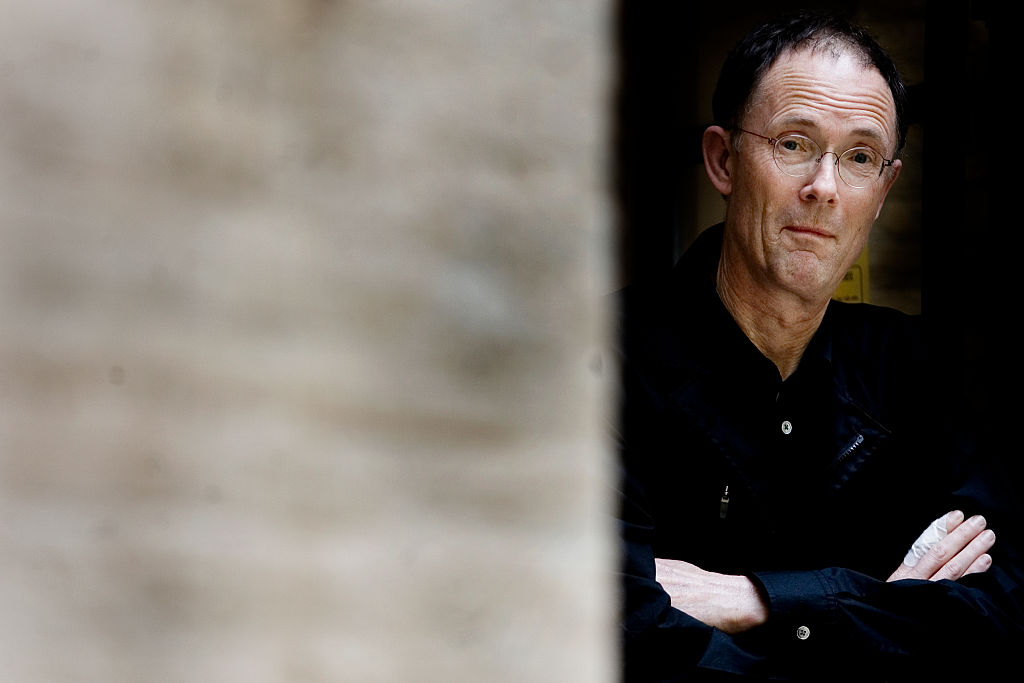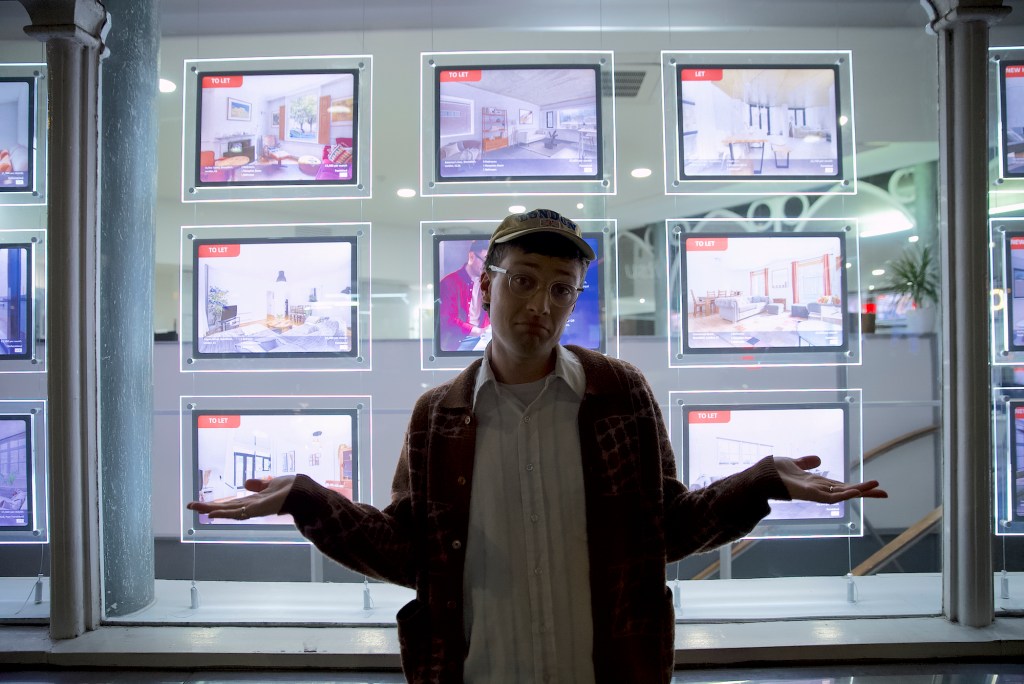I’ve never read a novel that better anticipated the spirit of the early 21st century than Neuromancer, William Gibson’s foreboding 1984 new wave manifesto. Because of its uncanny prescience, it seems relevant to ask when it’s set. Are the terrible and wonderful things it predicts conceivable in ten years? In 50?
Neither the novel nor its sequels set a firm date, but Gibson has waded into the matter himself by declaring that in his mind, Neuromancer takes place around 2035.
Videos by VICE
This, unfortunately, is where I become unbearable. I’ve read Neuromancer an embarrassing number of times, and I’m not convinced Gibson has the textual evidence to locate his own work so near in the future.
I should pause here: If there exists a special circle of hell for insufferable hipsters who imagine themselves to know more about a novel than its author, I will surely be cast down into it.
That’s appropriate, I suppose, since eschatology is a recurring theme in Neuromancer, which swept the Hugo, Nebula and Philip K. Dick awards with its fever dream of flickering neon. In it, the glowing abyss of cyberspace—a term the novel is perhaps now best remembered for popularizing—is itself a sort of afterlife, balkanized into looming echelons of mega corporations and military-industrial spook country, haunted by scheming artificial intelligences that Gibson casts as ghosts and demons summoned up from the archives of humankind’s collective superstition into some final solitaire of global thanatos.

Gibson presumably made a similar face when we questioned the date of his book. Image: Alessandra Benedetti/Corbis via Getty Images
A lot has been made of Gibson’s foresight over the years: in Neuromancer, he not only imagined a fully-realized internet a solid decade before the real thing caught on, but also sketched out a host of anxieties associated with the web that sound, well, a lot like the things that scare me these days about Facebook and Uber.
There’s a technology in the novel, for instance, called a “neural cutout”—it lets you rent out your physical body like an Airbnb, allowing an employer to direct you cybernetically to perform sex work or worse—that reads today as a searing critique of the gig economy. Until, that is, you recall that neither the web nor the gig economy existed in 1984.
Once you start looking, Neuromancer is filled with eerie parallels to the present. It anticipates in varying detail the cloud, military and commercial hacking, commercial space travel, reality television, cosmetic surgery and designer psychoactives. Even the names of its drinking establishments sound trendy by today’s standards: Le Monde, Crickateer, Emergency.
Gibson himself, I should point out, is an admitted slow adopter, and ambivalent about his cult as a computing oracle. In the decades since publishing Neuromancer, he’s argued that the novel’s gritty setting is less speculative than a reflection of the 1980s, or at least an aspect of the era characterized by a sort of casual brutality that’s hard to fathom for a gentle 90s kid like myself. You can also make the case that Neuromancer might have been more inspirational than prophetic—its technological vision, the argument goes, is simply so arresting that certain of its readers ended up getting jobs in the tech sector and creating real versions of Gibson’s imagined technologies.
“I was indeed imagining it as around 2035, but doing the math makes it obvious that the book’s author is congenitally innumerate.”
Still, Gibson has recalled that he first conceived of Neuromancer as he meandered through downtown Vancouver in the summer of 1981, listening to Joy Division on a freshly purchased Sony Walkman. It’s hard to resist the idea that as he did so, he inadvertently channeled some oblique groove in the trajectory of history that led from the portable cassette player to Spotify and beyond, and maybe as far as our own prototypal neural cutouts—Taskrabbit, perhaps, or Chaturbate.
But, sticking to the text, I think there may be some time before we end up in Neuromancer‘s world. Most damning are a couple of very elderly characters whose ages can be used to calculate that the book clearly set long after the 2030s. If Julius Deane is 135 years old in 2035, for one, he’d have been in a retirement home by the time Gibson set pen to paper in the 1980s, with no clear path to becoming a black market importer in Chiba City. And that’s to say nothing of John Harness Ashpool, who tells Molly Millions he’s nearly 200 years of age—which would mean, inconveniently, that he was born before the American Civil War, and almost certainly dead by the time Gibson started writing.
Then there’s the dishevelled, Partagás-smoking Finn, who makes an offhand reference to the “Act of ’53” as a law deals with the citizenship status of artificial intelligences. I was unable to locate any real world legislation normally referred to by that title, so my guess is that the Finn was referring not to 1953 but to 2053.
Taken together, I think it’s clear that Neuromancer is set in the latter half of the 21st century, or even the 22nd. References to catastrophic global upheaval in recent decades could explain the relatively modest pace of computational progress—one of the most dated lines in the book refers to a piddling three megabytes of RAM—while accounting for the comparatively fleshed-out space travel industry.
I sent an email about my theory to Gibson’s agent, who shared it with him and sent me his reply: “I was indeed imagining it as around 2035, but doing the math makes it obvious that the book’s author is congenitally innumerate.”
I wonder, though, whether Gibson’s suggestions that Neuromancer is set in the nearer future than the text supports might run deeper. His agent declined to pass on further questions, so it’s sheer speculation when I wonder if he’s accelerated the timeline, perhaps subconsciously, because he feels our present moment being pulled inexorably toward Neuromancer‘s by Fancy Bear, Oculus Rift and Trump’s Twitter feed.
Perhaps, I fret, he’s trying to warn us that we too are close to summoning demons.
More
From VICE
-

The author lurks outside an estate agents, Voigt-Kampff machine just out of shot. Photo by Zuka George -

Photo by Marie Mangan, courtesy of University College London Hospitals NHS Foundation Trust -

Screenshot: Unknown Worlds Entertainment -

Collage by VICE
